Most projects follow a strict timeline, which means that the project deliverables must be produced within a specific timeframe. Since projects are multifaceted (they have multiple tasks or activities), each task within the project must be assigned an individual deadline to ensure that the project progresses without interruptions. Coordinating the various activities of a project thus becomes an essential part of its success, particularly in terms of its completion time.
A project timeline is used to document the activities to be completed during the project as well as their duration. The document is distributed to team members and stakeholders to ensure coordination and agreement.
What is a Project Timeline?
A project timeline is a visual representation of a project’s tasks, activities, and milestones listed in the chronological order in which they are to be completed. The start and end dates, duration, and dependencies on other tasks, activities, and milestones are all defined for each task in the timeline.
Note: Important elements of the project timeline are tasks, dates of commencement, duration of each task, due date, dependencies, and names of team members.
Project Timeline Templates
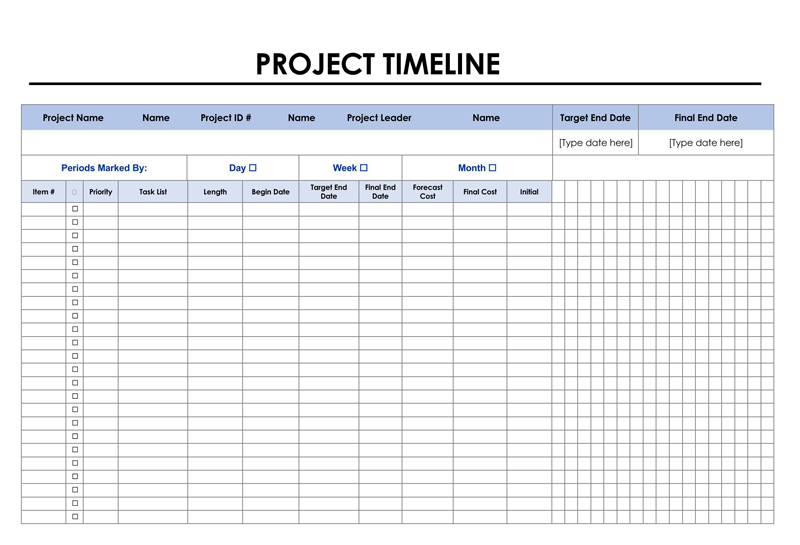
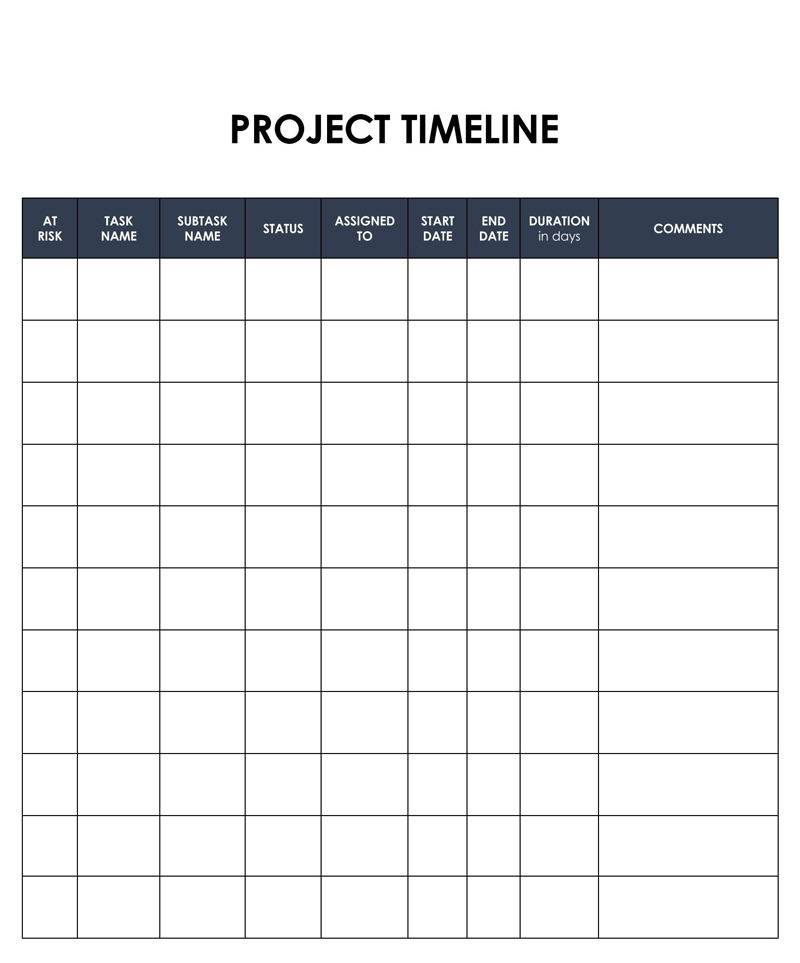
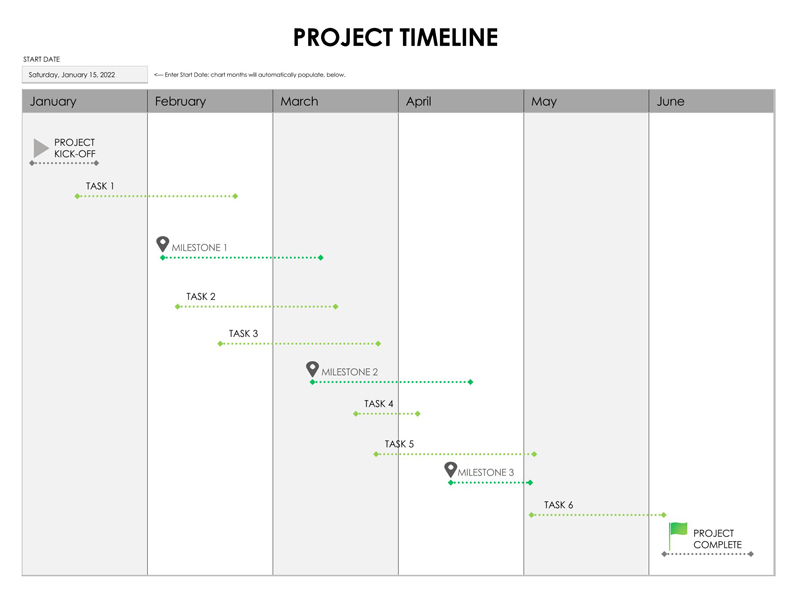
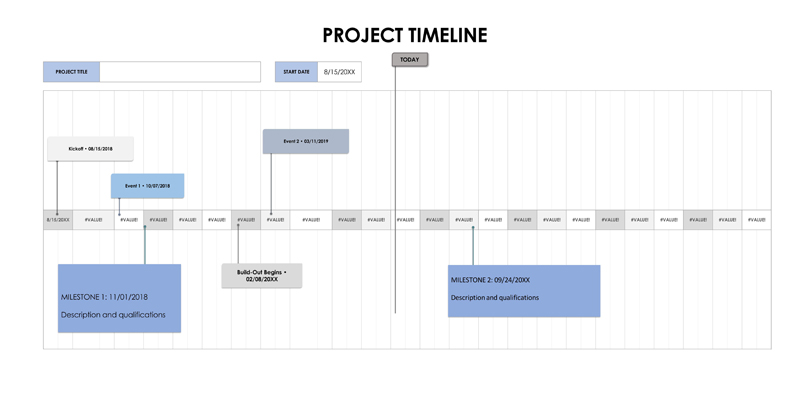
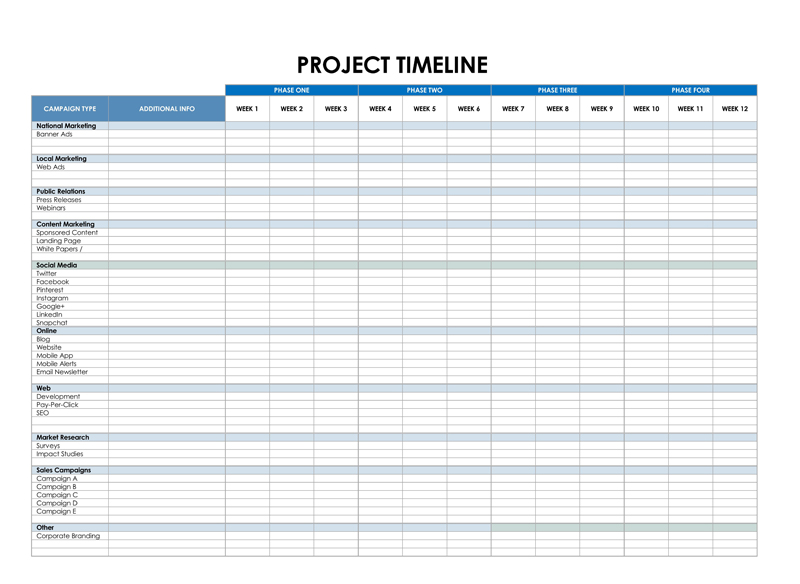
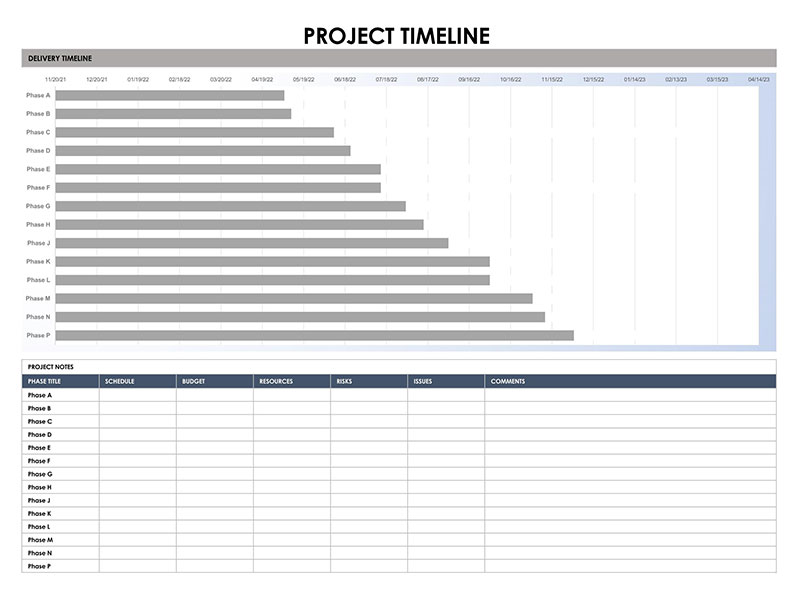
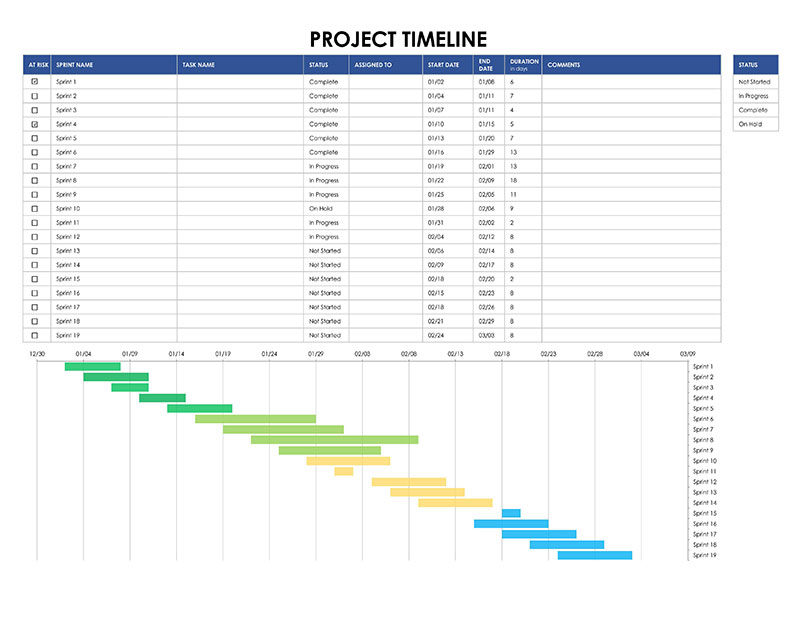
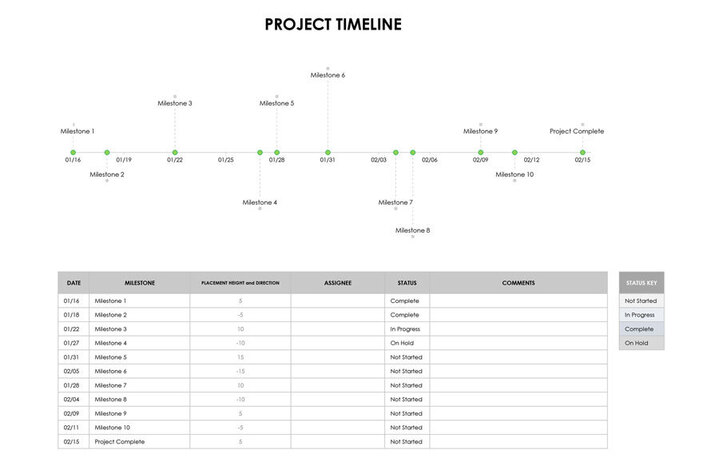
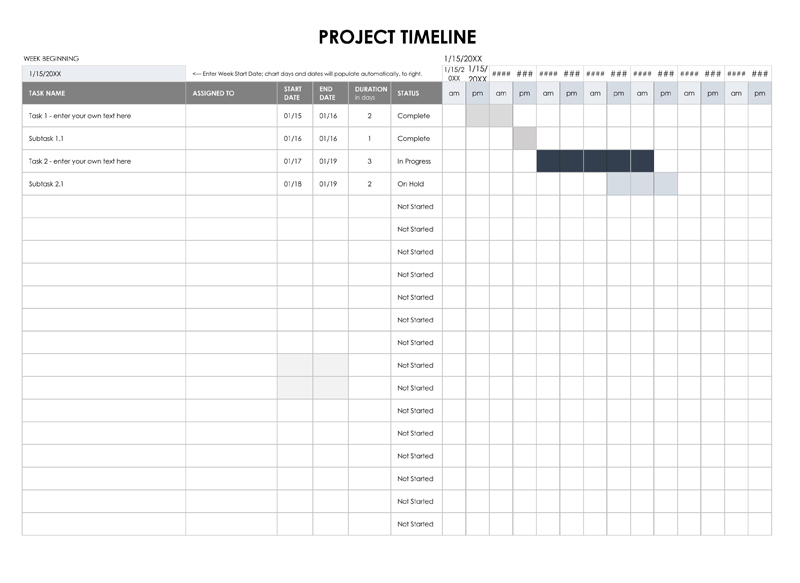
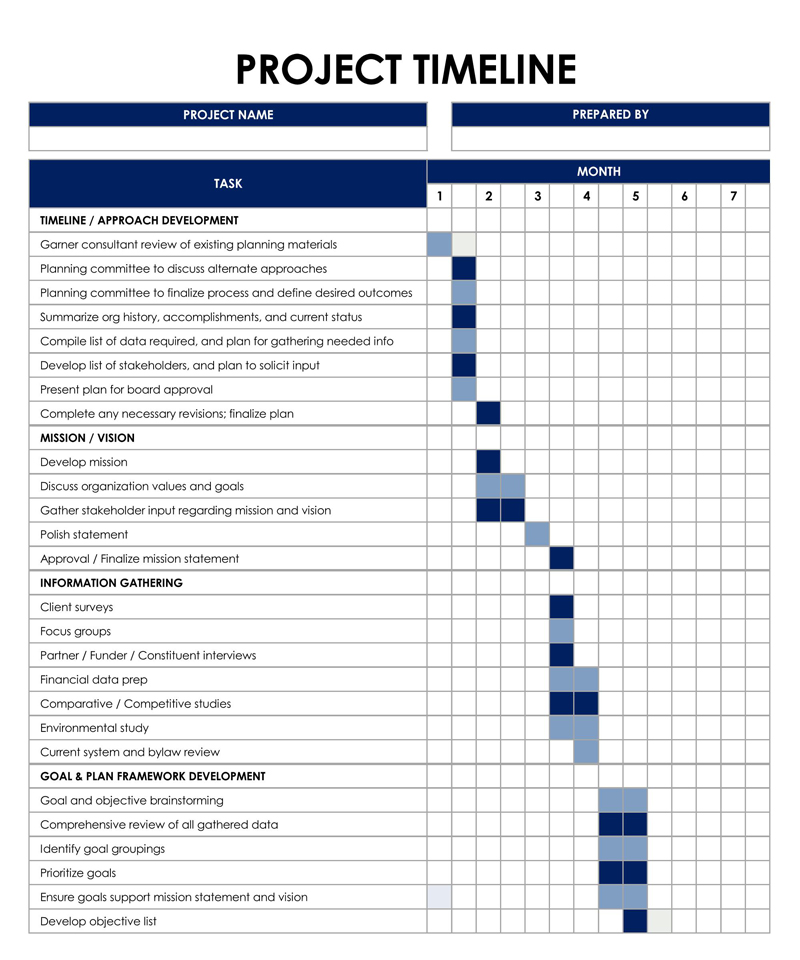
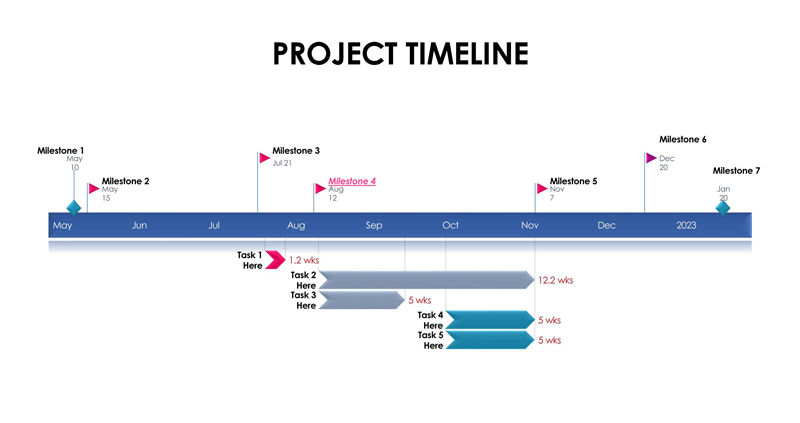
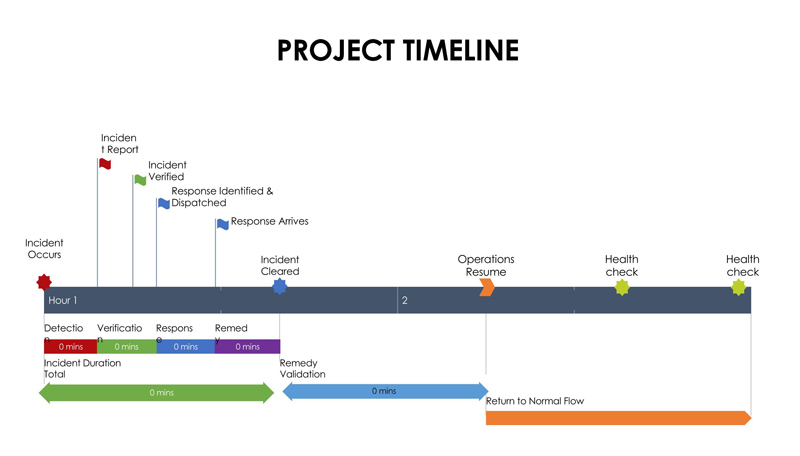
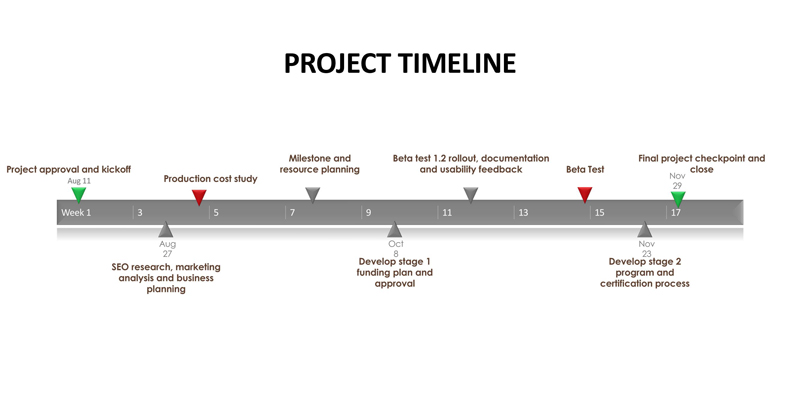
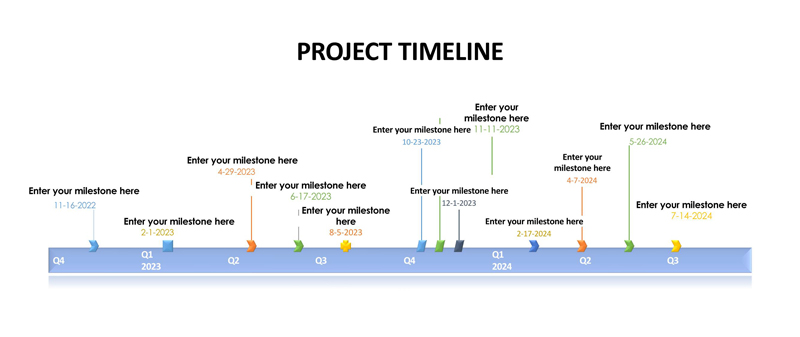
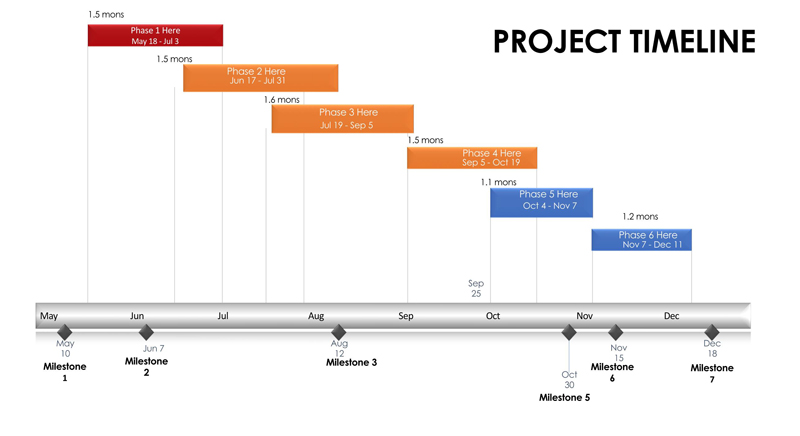
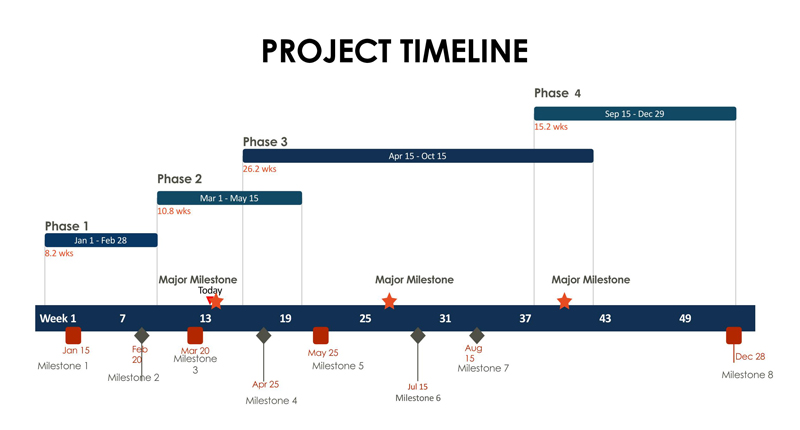
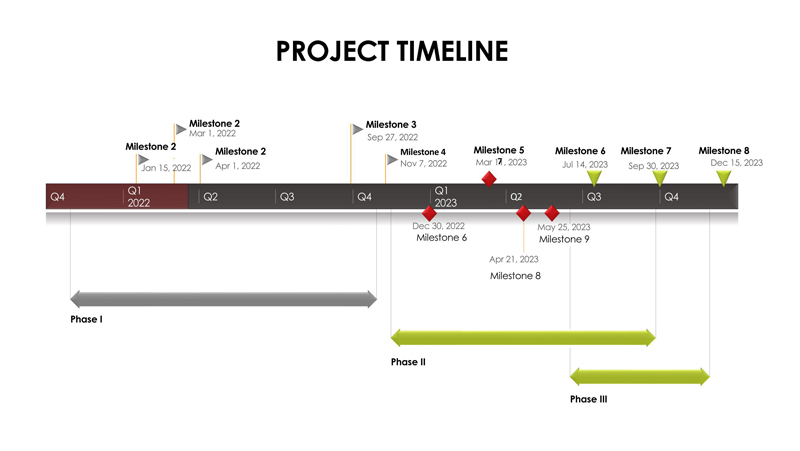
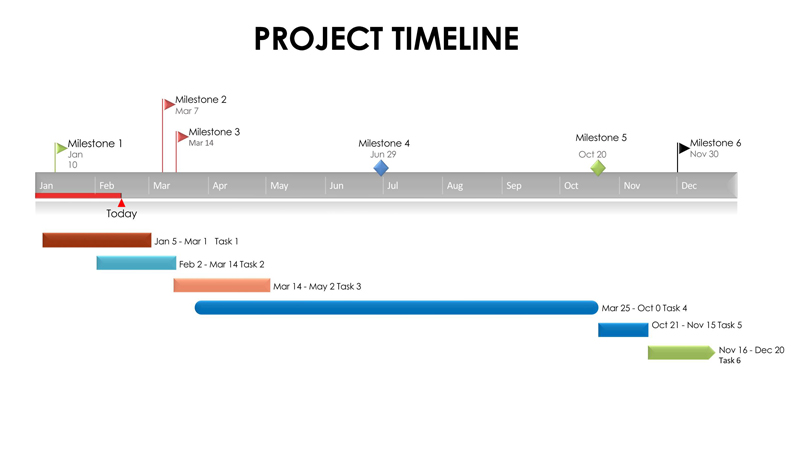
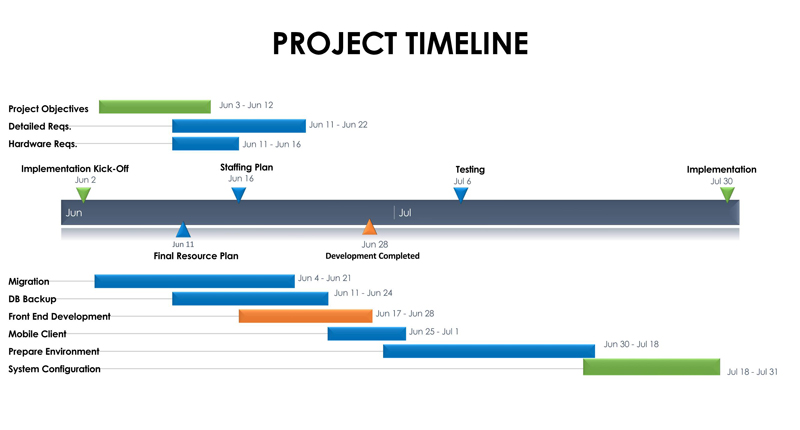
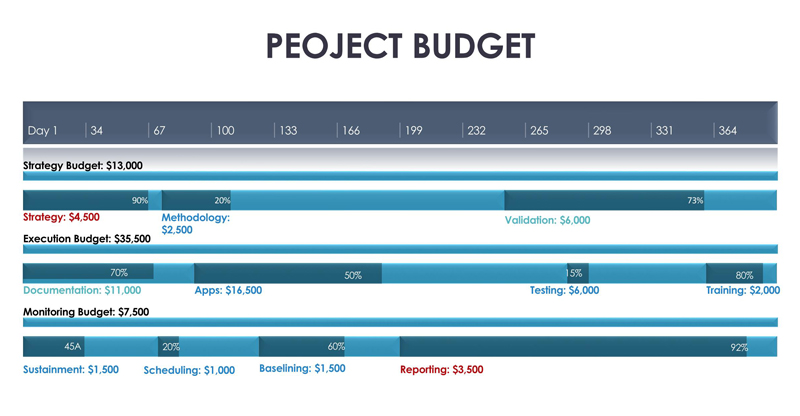
Benefits of Using Timeline
The advantages of using a timeline for project management will extend to various stages and aspects of the project. Managers can organize their teams, schedule when to start project activities and see how each task is connected to the other tasks. They can plan how various tasks are to be assigned to the team members and create effective time management schedules. This section will discuss some important benefits of a project timeline below.
Improves communication
A timeline facilitates effective communication among management, team leadership, and team members. This is because it can indicate management’s expectations of the team. A timeline can also show investors and clients the tasks that will be done to produce their desired deliverables. It is also simple to add new members to it.
It helps with monitoring and evaluation
A project’s progress and requirements can be determined by outlining all of the different tasks that need to be completed, making it simple to monitor and manage the project’s progress at each stage. This ensures progress is monitored, and any deviations can be corrected instantly.
It follows the plan
A project timeline shows how progress will be made from task A to task B and thus represents how well the executors are organized. Being structured helps project managers feel more motivated and makes task completion effortless.
Monitors tasks and their deadlines
Delays can be avoided by being aware of what needs to be done and when during the project’s progress. A project timeline indicates the exact task that has to be completed before a specific date when another task is expected to begin, thus ensuring that the dependencies between tasks, milestones, and phases are mutually beneficial and play their roles toward the overall objective.
Visual tool
A t timeline is a visual tool that is easy to interpret. It shows how different tasks are interconnected, which is essential in prioritizing tasks that best meet the project objectives within an optimal timeframe.
Specifies the workload
Through a project timeline, teams can see the workload they are expected to receive within specific durations. The timeline can be used by project managers to allocate responsibility equitably in order to prevent overwhelming one team with duties that could otherwise be distributed to other less strained teams.
Gives a broad overview
A timeline makes it simple to demonstrate all of the variables involved. Moreover, it can also show tasks that signify key phases or periods of a project.
Surety of the same goal
For a project to be successful, you must have your entire team involved in it. Timelines assist everyone in understanding what role they have in the overall success of a project. By highlighting the overall goal, a timeline ensures that all involved parties, investors, managers, supervisors, workers, technicians, etc., are aware of their role and commited to achieving it.
Keep everyone informed
A project timeline simplifies monitoring because even shareholders and third parties can monitor the project using the timeline. In addition, this promotes trust and effective communication among shareholders. Everyone is in possession of the project’s road map, and as a result, they all have some level of control over all the activities during that time.
It facilitates changes
Uncertainties are common in projects, and as a result, changes may be necessary to deal with unexpected events. Since dependencies have already been established, changes can be easily incorporated into the timeline without compromising other tasks.
Eliminates bottlenecks
Transitions from one step, milestone, or phase to another can be made without delays by prioritizing tasks and establishing dependencies between them in a project timeline. This will make it easier to complete the project.
Free Templates
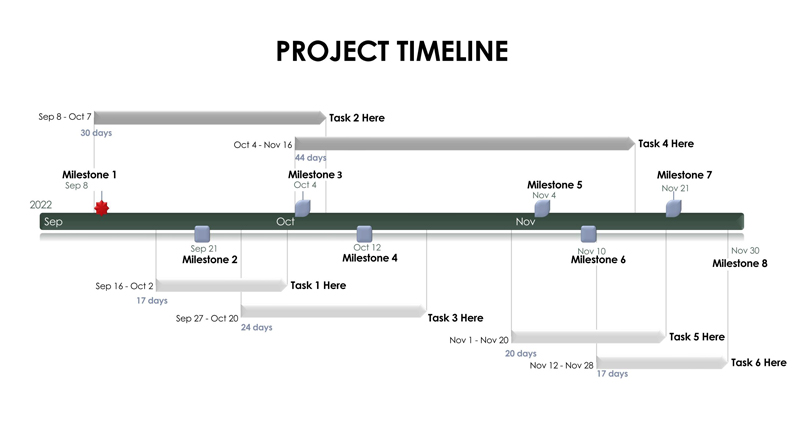
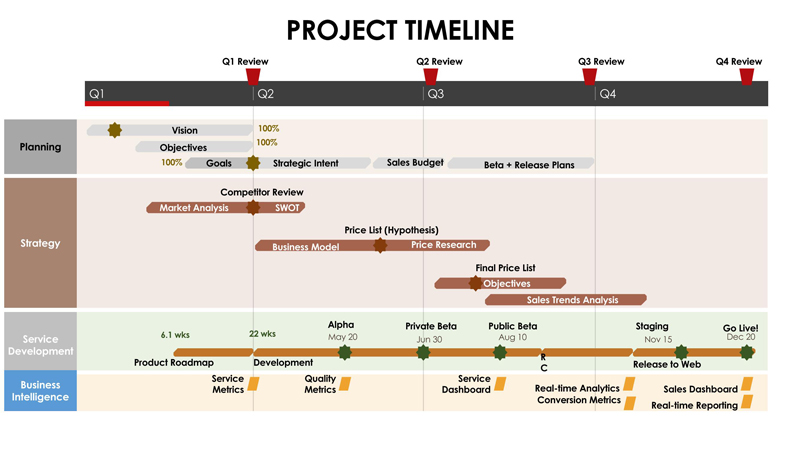
Types of Project Timeline
A timeline for one project may differ from another depending on the design and arrangement of information in the document. Below are the common types of timelines that can be used for different projects.
Chronology type timeline
A chronological timeline shows tasks in chronological order, as the name suggests. It is also referred to as a historical timeline.
The tasks are arranged from left to right in ascending order, from the early (beginning) tasks to the last (final) tasks. The information can also be arranged from top to bottom. A chronological timeline cannot be used to indicate parallel tasks.
Gantt chart timeline
A Gantt chart is a comprehensive timeline that shows all of the tasks, due dates, dependencies, assigned members, and project milestones. Consequently, it has higher adaptability and can be used in most projects to show parallel tasks as well.
Vertical timeline
Vertical timelines track information from bottom to top. This kind of timeline can be used to calculate durations and sums. These typically begin at the bottom and rise in order to demonstrate growth or progress toward a target.
Vertical timelines are used to show the growth or increments of a specific item over a predetermined time period, such as sales, revenue, traffic leads, or production units. Vertical timelines are used with statistical data to identify patterns and make project-related projections. They are popular in organizations’ finance and marketing departments.
Timeline on a bar chart
This kind of timeline makes use of bar charts to show results at specific times and points in a project’s timeline. The resources are displayed on the vertical (y) axis, while the time progression is shown on the horizontal (x) axis. Bar chart timelines make it easy to monitor trends or changes in the outcomes of project deliverables over time.
Steps to Create a Project Timeline
Before beginning a project, a project management timeline should be created to inform the team and other stakeholders of how much time they have to finish the project and the tasks between start and finish. A timeline becomes a vital part of the planning process for the project’s success. Now, how is a project timeline created? Below are the steps to creating a feasible and effective timeline for any project.
Define project goals
Firstly, it must be clear what the project is trying to accomplish. This can be done by writing a project scope statement that outlines all the goals or deliverables accurately and the resources that are available to accomplish them.
Identify all stakeholders
Second, identify and make a list of all the stakeholders and the people, departments, or organizations involved in the project. This can be interpreted as the “CC” section of an email, which indicates all the parties that have to see the project timeline once it is completed.
Determine the final deadline
Thirdly, mention the expected time of completion. Most projects will have an expected completion date that includes contingencies for unplanned events. This deadline is anticipated to serve as a guide for the timeline and the amount of time allotted to the teams.
Make a work breakdown structure
Create a WBS (work breakdown structure), a visual tool that divides the project deliverables into smaller segments, after mentioning the project’s final deadline in the timeline. To achieve the overall goal, these smaller segments must be finished first and in a specific order. The tasks associated with each deliverable should then be outlined.
Identify task dependencies
Next, determine which tasks are dependent on each other. For example, some tasks cannot begin or end without others being completed first. This dependency is crucial in preventing delays in progress. Finding the dependencies enables the project to proceed without interruptions.
Determine the tasks’ duration
Calculate the estimated completion time for each task and record it in the project timeline once the relationships and dependencies between tasks have been established. It may be necessary to consult with experts, specialists, and team leaders to make an accurate estimation of the required time.
Identify the resources
Each task identified in the project timeline template requires different resources. You should assess the resources available. Take into consideration the expertise, time, individual abilities, and preferences of team members and consumables within the project. Determine the availability of each task’s resource requirements and ways to utilize them effectively.
Assign tasks to your team
Next, with all resources considered, assign the tasks to the respective teams and record this information in the timeline. Tasks should be allocated based on feasibility, the team’s capability, accessibility, and adaptability. For example, tasks with high uncertainties should be allocated to the most adaptable team to mitigate the risks and delays of any unprecedented events. Also, allocate tasks based on expertise and capabilities so they are completed on time.
Set milestones
Now that the tasks have been distributed to the teams, break down the project into milestones. Cite important results or deadlines to describe the milestones. One phase’s completion, for instance, could be a quarterly milestone; similarly, progress could be measured on a biannual or annual basis.
Each milestone should have specific deliverables that mark its success. Setting milestones is crucial for monitoring development as the project moves forward.
Organize your project schedule using a timeline tool
Lastly, compile your timeline information into a final project timeline. Project timelines can be created using templates or software by outlining the tasks, deliverables, milestones, and other information required. It is recommended that a timeline that is easy to share with stakeholders be used to make changes without having to rewrite the entire document whenever necessary.
Professional Tips
The following are some suggestions for making a project timeline more effective and comprehensive:
Revise your timeline regularly
It is an excellent practice to review your timeline on a regular basis so that any changes in project progress can be adjusted and aligned with the overall deadline. Using a readily adjustable template or application is an excellent way to ensure this is possible.
Communicate with your team and stakeholders
Always communicate with the teams and stakeholders regarding any changes to the timeline. This can be accomplished by holding meetings on a regular basis. Meetings with team leaders who can communicate information to their respective teams are also important for large projects.
Follow critical path
Determine the key tasks that have a significant impact on the project’s success when developing a timeline. Knowing the critical path makes it easier to prioritize tasks so that, even in the event of changes, the project will still finish on schedule.
Final Remarks
An essential tool for starting any project is a project timeline. It provides a visual summary of what needs to be done, when it needs to be done, and who is responsible for doing it. Therefore, project timelines need to be created in the planning stage of a project. The timeline will typically be shared with all stakeholders to keep them informed of all project progress details. Besides being a scheduling tool, a project timeline is a communication tool between management and workers, as it clarifies what is expected of the team who are assigned tasks.
It is recommended that project timelines be created using templates or software, as they are easy to use and update to accommodate any changes during the project. Always choose a template that best suits your specific project. There are several types of project timeline templates available, including bar charts, Gantt charts, and chronological/historical timelines.




